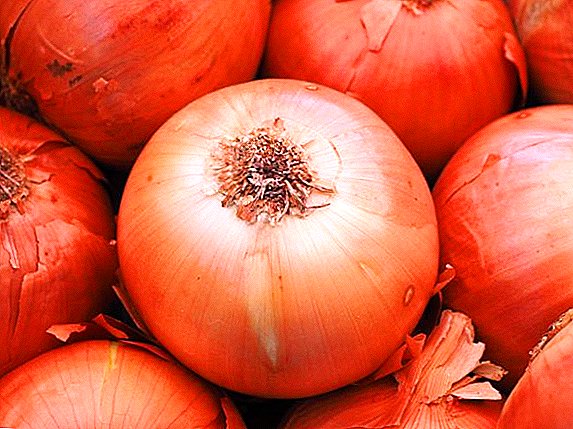 Charming lilies give their unsurpassed beauty and delicious aroma, can be an ornament and a highlight of any garden area. Various colors encourage gardeners to replenish their collection with new varieties annually. In order for them to develop well and properly, and to please the eye as long as possible, it is necessary to provide the Lilies with proper care, an important component of which is the autumnal preparation for winter.
Charming lilies give their unsurpassed beauty and delicious aroma, can be an ornament and a highlight of any garden area. Various colors encourage gardeners to replenish their collection with new varieties annually. In order for them to develop well and properly, and to please the eye as long as possible, it is necessary to provide the Lilies with proper care, an important component of which is the autumnal preparation for winter.
Features of autumn care
Caring for lilies in the fall is the proper preparation of the plant for the winter, and it should be done long before the onset of cold weather. Immediately after the end of flowering, it is recommended to feed the lily with potassium superphosphate, this will help the bulbs to ripen and get stronger faster.
In September, Bordeaux lily mixture should be treated, as prolonged rains can provoke the appearance of pests and diseases, which is definitely not desirable at the final phase of the growing season. To do this, using a spray spray them with the drug. 
Important! There are lilies that do not need preparation for winter, namely the Asiatic hybrids, Daurskuyu, Peneselvanskuyu and lily Martagon can be left in the ground, the rest need to be sheltered or dug.
How to keep lilies in winter?
There are many disputes on whether the preparation of lilies for the winter is necessary. And a specific answer can be obtained only with respect to a particular species or variety and climatic conditions in which the plant grows.
If winter frosts are severe enough, then autumn events are obligatory for implementation, since very few varieties are able to tolerate low temperatures without serious consequences. Therefore, it is necessary to provide proper care for lilies.
First of all, they need to be well fed, for example with humus or compost. Such fertilizers feed the plant, and still create a protective cushion that will serve in the future as a protective shelter from the cold. Organics contribute to the soil with a layer of 10-15 cm. 
Digging or not?
Let's see if you still need to dig out lilies for the winter. In this matter, it all depends on the variety, because the plants are dug not only because of the severe frosts, but also for the purpose of reproduction.
Learn how to prepare roses and peonies for winter.On the bulbs of Asian hybrid varieties, many children are formed during the growing season, which must be separated, because in the spring they will take power from the plant, and it will grow and develop poorly, and then it may stop blooming altogether.
Eastern hybrids are transplanted every 3-4 years. As for the frost resistance of lilies, varieties that are adapted to your area will carry the winter well, they can be left for the winter in the ground. 
Did you know? In ancient Rome, lilies were considered a symbol of luxury and wealth.And all the rest is still better to dig or cover. It is believed that the more decorative a flower is, the more tender it is and, accordingly, it tolerates low temperatures worse.
Do I need shelter?
Shelter plant is definitely necessary if it grows in open areas that are not protected from strong winds, and if the groundwater is close enough.
It is also recommended to cover the lilies from heavy rainfall, which can begin in the fall in the form of rain, and then continue with snowfall. Like all bulbous, these flowers do not tolerate excess moisture, it can provoke premature vegetation, as well as cause rot.
How to dig?
In order to carry out the procedure with high quality and without serious consequences, it is necessary to follow simple rules.
Cropping flowers
By pruning can and should start only when the leaves turn yellow and finally dry.
Important! In no case can not cut the green leaves immediately after flowering, early pruning is fraught with the death of the plant.
At the end of the growing season, when the leaves are dried, the plant is cut so that the stem is at least 6 cm long.  Unfortunately, it is impossible to call the exact date when it is necessary to do it, but on the basis of practice, the period favorable for pruning and digging falls at the end of September.
Unfortunately, it is impossible to call the exact date when it is necessary to do it, but on the basis of practice, the period favorable for pruning and digging falls at the end of September.
Lilies look very nice against the background of such low plants as marigolds, garden carnations, iberis, allissum, geyhery.
Head digging
Digging onions need to be very careful not to deform them in the process. It is better to initially remove them from the earth lump, which later must be carefully removed.
When the bulb is removed from the ground and is in your hands, carefully inspect it, if there is rot on it, it should be carefully cut with a sharp knife. After that, be sure to wash the planting material with water and disinfect.
For disinfection, you can prepare a weak solution of potassium permanganate, and leave the bulbs in it for 35-40 minutes. After water procedures, it is necessary to dry the onions.
In no case do not need to leave them in the sun, direct sunlight and open light in this case only harm. Drying should be carried out in a fairly cool place where the temperature does not rise above 18 ° C. 
Storage rules
Now the main question: how to store dug out lilies in the winter at home. To do this, proceed in order. After the bulbs have dried, it is desirable to roll them in the ashes, and then place them in a cardboard box, a plastic container with a lid or a paper bag.
This is necessary in order to protect them from light. In order to create a favorable microclimate in the package, you can pour sawdust there or place moss.
When the bulbs are dried and packed, they are cleaned in a dark, cool place; a basement or a refrigerator is ideal for this.
Did you know? Lily can be found even in Egyptian hieroglyphs. There, these scriptures had a sense of hope and freedom.
Ways to cover lilies
If you have already decided that you should not dig an onion for the winter, it grows on an elevated site and is protected from wind and groundwater, you should still worry about shelter.
To do this, use a variety of materials, both natural and artificial. On lilies, you can lay out a thick layer of 15-20 cm sawdust, humus, or build a lapnik, that is, cover it with spruce or pine branches.
As cover, roofing material, film or roofing material can be used. Whatever material you choose, it will reliably protect flowers from frost and heavy rainfall. They take shelter when weather conditions return to normal, and the temperature will be above 0 ° C.
Autumn care for lilies, although it seems troublesome at first glance, in fact does not require much of your strength and labor. Doing the above procedures for the winter, you will be sure that in the next season your flowers will be only more beautiful. 












